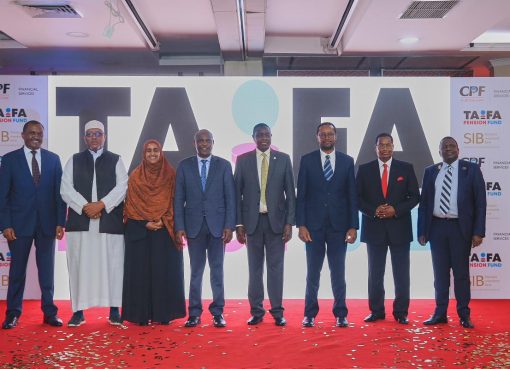The Nakuru County government has committed to make significant investments in tertiary institutions to accommodate the increasing number of students and ensure access to higher education.
Consequently, the county has embarked on the transformation of various vocational training centres with a view to aligning them to current market trends.
Governor Susan Kihika’s administration has already initiated construction works at the Mwariki Vocational Training Center (VTC) in Rhonda Ward, within Nakuru Town West Constituency, with a pledge to focus on strengthening the ties between vocational training and industry needs, as a way of addressing the critical issue of youth employability in Kenya.
Kihika has emphasized the growing need for students to pursue technical education in light of the rising number of high school graduates.
The governor noted that the country is facing a shortage of skilled technicians, urging students to explore technical fields that are critical to shaping Kenya’s economic future.
She indicated that the County Government is championing a dual Technical Vocational Education Training (TVET) program- an educational approach that combines theoretical classroom instruction with practical workplace training.
“We remain steadfast in our commitment to empowering young people across Nakuru County. The ongoing construction of the Mwariki Vocational Training Center (VTC) is a transformative project to equip the youth with essential skills for self-reliance and career development,” she stated.
A delegation led by the County Executive for Trade Stephen Kuria and his Youth and Sports counterpart Josephine Achieng’ was recently tasked with a site visit to assess the progress of the ongoing VTC construction at Mwariki in order to ensure the ongoing works meets the required standards and confirm that it will be completed within the stipulated timeline to serve the community.
“The facility will provide a platform for young people in Ronda and the surrounding areas to access training in diverse fields, opening doors to employment and entrepreneurship opportunities. This initiative reflects our vision of creating sustainable opportunities for the youth, ensuring they are empowered to build brighter futures for themselves and their communities, the duo noted.”
The governor’s leadership is keen to merge skills with certificates, so that those with skills are given recognition, while those with papers are equipped with the necessary skills to drive this economy forward.
Kihika also called attention to Kenya’s growing demand for digital and technical skills, encouraging young people to retrain and stay aligned with the industry needs.
She indicated that proper TVET-Industry linkages are essential in meeting one of the biggest challenges of TVETS- delivering employable graduates to meet the growing industry demand.
She emphasized that the difficulty primarily arises from the lack of practice-oriented training and inadequate industry engagement.
“We shall continue supporting our VTCs through the Sh30,000 capitation fund per trainee, infrastructure improvement, equipping and staffing. Together with our partners, we are building a workforce that will propel Nakuru County to an economic giant in future,” she stated.
Kihika indicated that her administration is working out a partnership with several private companies aimed at equipping students in Youth Polytechnics and Technical Vocational Education Training Institutes (TVETs) with hands-on skills in an industry setting during their time of study.
She said that the venture was geared towards bridging the skills gap among TVET graduates by ensuring that students spend at least 50 percent of their training working with relevant industries.
“We are exploring a model where students are subjected to a combination of theory and practical training, in a real-life work environment through an interchange of training at a TVET institute and in a company,” she stated.
She announced that her administration had set aside funds towards youth empowerment initiatives including upgrading facilities at the County’s Vocational Training Centres (VTCs) with the aim of meeting required standards and attracting more youth enrolments.
“Our goal is to have more young people enroll in various courses not offered professionally at the University level. Strengthening the collaborative linkages between the county government and the private sector is one of the most effective ways of driving the TVET agenda as students can be exposed to the real world of industry and business,” stated the County boss.
The governor pointed out that close links between enterprises and training centres have been at the core of Western World’s economic success since the 19th century.
The county has 24 youth polytechnics spread across the 11 sub counties.
According to the Technical Vocational Education and Training Authority (TVETA), there are two accredited public TVET institutions in the county- the Dairy Training Institute in Naivasha and the Rift Valley Institute of Science and Technology in Njoro, and a total of 18 accredited private TVET institutions.
The private sector, the Governor noted, contributes over 70 percent of formal employment but in some cases, they struggle to find candidates due to a mismatch between the courses offered in TVET institutions.
At the same time, the private sector can partner with tertiary institutions to develop specialized short-term practical courses, for example, on entrepreneurship, to further sharpen graduates’ business skills.
The Governor added, “My administration is keen to forge partnerships with the private sector in areas of research with emphasis on the changing market environment and consumer trends. This will build a valuable knowledge base that the private sector and the county government can leverage to improve technical training and solve real economic problems.”
She observed that the National Government had rolled out new technical and vocational courses as it began to implement the Competence-Based Education and Training (CBET) policy framework aimed at delivering industry responsive skills.
The governor emphasized that an effective Technical and Vocational Education Training (TVET) system will play a key role in achieving the Vision 2030.
“CBET concept entails the involvement of industry in all aspects of training. This will include development of occupational standards, training programmes, facilitation of training as well as assessment. We are keen on entrenching CBET in our systems,” said Ms Kihika.
The Governor stated that in the world over, the labour market was transiting from theoretical expertise to practical-based skills adding that a growing number of Kenyans with good academic qualifications were unemployed because of a mismatch of skills and career choices.
She revealed that there was a growing shortage of technicians and artisans in the country and noted that in order to achieve the Kenya Vision 2030, the country needs 90,000 technicians and over 400,000 artisans to plug the current shortage.
“We boast of having an educated youth, whose glossy academic qualifications are a mismatch with practical industry needs. Our educational institutions are churning out more quantity surveyors, engineers and architects against a backdrop of growing worrisome shortage of vocational skills and competencies such as plumbing, electrical installation, welding, brick laying, painting, carpentry, tailoring among others. If we go on like this, we will start bringing in expatriate artisans and craftsmen,” Ms Kihika added.
She however expressed optimism that the situation was steadily improving as the national government’s initiative to invest in new equipment, modern technologies and infrastructure and qualified training staff was paying off as student enrolments in TVETS had increased.
Kihika challenged parents to champion (TVET) courses to help their children acquire relevant skills favourable to the local and international labour markets adding that technical training plays a vital role in strengthening the country’s economy.
She indicated that parents should now focus more on courses offered in vocational training centres and argued that technical and vocational training holds the answer to economic challenges such as unemployment.
“The strength and future of a country’s economy depends on two major factors, skills of its manpower and production which comes from it. This can only be achieved through TVET, as it is the masterpiece to alleviate poverty and usher in growth,” she said.
By Jane Ngugi





